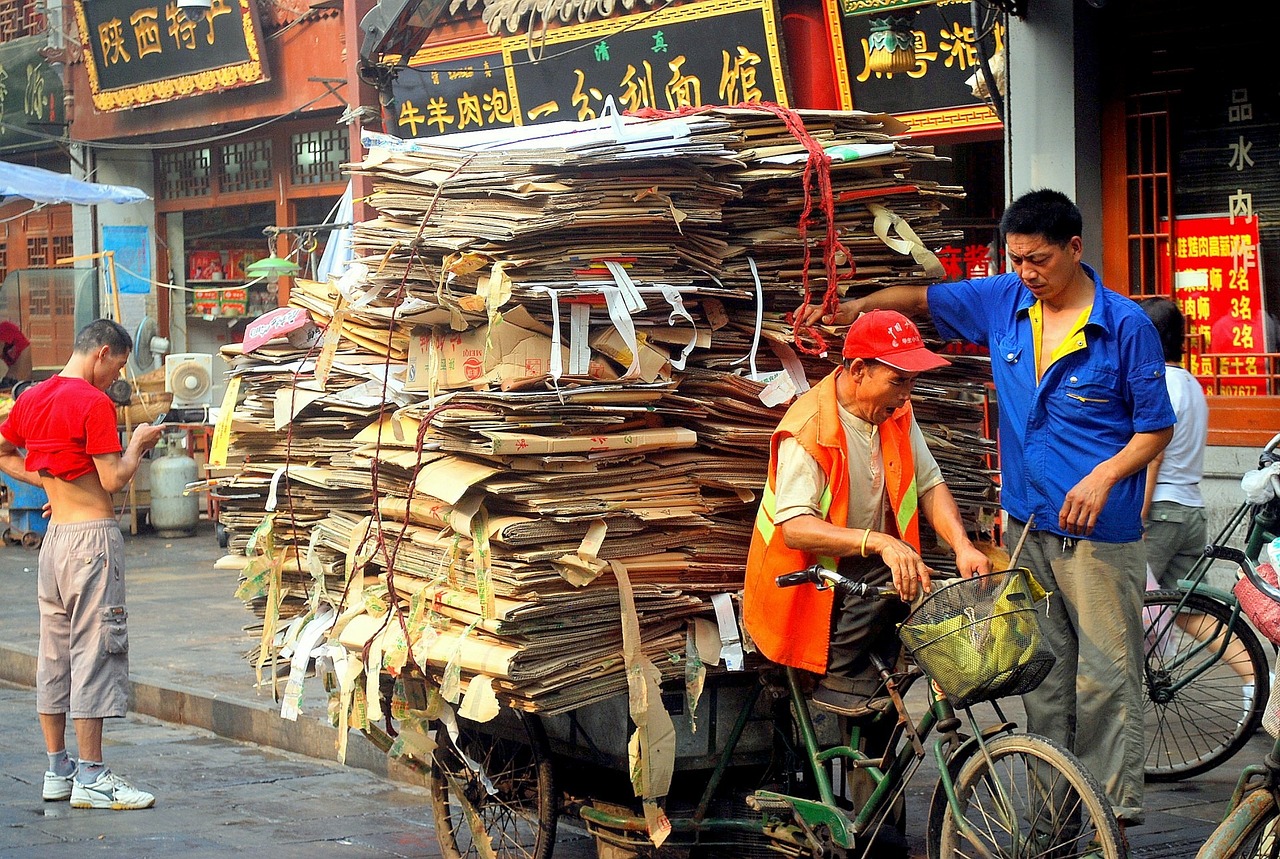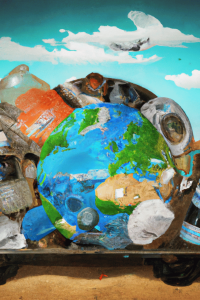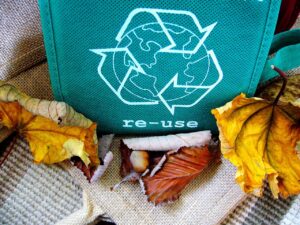Introduction: Unveiling the Secrets of Cardboard Recycling
Have you ever wondered, “Is cardboard recyclable?” Prepare to embark on an exciting journey as we unravel the mysteries of cardboard recycling! Have you ever looked at a cardboard box and wondered about its destiny? What happens to it after its initial use? Well, get ready to be amazed because cardboard has an incredible afterlife. In this adventure, we’ll dive into the world of sustainable practices and discover how cardboard transforms into valuable resources. Buckle up and join us on this exhilarating quest!
Is Cardboard Recyclable: Understanding Cardboard
Cardboard, often referred to as the heavyweight champion of the paper world, is a material that demands our attention and appreciation. It possesses remarkable qualities that render it sturdy, versatile, and more dependable than a Swiss Army knife on a camping trip. Derived primarily from cellulose, a plant fiber, cardboard stands out as not only strong but also sustainable.
Types of Cardboard
Cardboard comes in various forms, each tailored to specific purposes and bearing its unique set of characteristics and applications:
Corrugated Cardboard: Picture a sandwich, but instead of edible layers, it’s made of paper. Corrugated cardboard features a wavy layer nestled between two flat ones, creating a robust and resilient structure. This unique composition makes it the go-to choice for heavy-duty packaging and shipping needs. Whether you’re sending fragile items or bulky goods, corrugated cardboard can handle the challenge with ease.
Paperboard or Solid Cardboard: In contrast to the ruggedness of corrugated cardboard, paperboard, or solid cardboard, exhibits a lighter and more flexible demeanor. However, don’t let its lightweight appearance deceive you; it possesses surprising toughness. You’ll encounter paperboard in everyday items like cereal boxes, shoeboxes, and various household products. Its versatility extends to various packaging applications, and its ability to protect and display goods makes it an invaluable part of our daily lives.
Cardboard: The Unsung Hero of Packaging and Beyond
While cardboard often goes unnoticed in our daily interactions, its versatility and sustainability have earned it the status of an unsung hero in the world of packaging and beyond. Its resilience, recyclability, and adaptability have made it an indispensable material in industries ranging from e-commerce and manufacturing to arts and crafts. Understanding the various types of cardboard and their specific strengths allows us to appreciate and harness this remarkable material in our daily lives. Whether you’re moving house, receiving a package, or enjoying your morning cereal, remember that cardboard is there, quietly and efficiently doing its part to make our lives easier and more sustainable.
History of Cardboard Recycling: A Journey of Environmental Conservation
The history of cardboard recycling takes us on a journey back to the early 20th century, marked by a growing awareness of environmental preservation and resource conservation. As industrialization and consumerism gained momentum, so did the demand for cardboard packaging. However, as society began to grasp the environmental consequences of excessive waste, recycling practices emerged as a solution.
During the Great Depression of the 1930s, recycling gained significant traction as a means to recover valuable materials from discarded items. Cardboard, with its abundance and inherent recyclability, quickly became a primary target for recycling efforts. Recycling centers and programs were established to collect and process cardboard waste, effectively giving this versatile material a second lease on life.
Since those early days, cardboard recycling has evolved significantly. Advancements in recycling technology, coupled with a growing environmental consciousness, have propelled cardboard recycling efforts forward. Today, cardboard recycling stands as a vital and integral component of waste management systems worldwide. It not only reduces the strain on landfills but also contributes to the principles of the circular economy, where resources are conserved, and waste is minimized.
So, when you ask, “Is cardboard recyclable?” the resounding answer is an emphatic yes! The history of cardboard recycling serves as a testament to human ingenuity and commitment to mitigating the environmental impacts of our consumer-driven world. As we continue to embrace recycling practices, we ensure that cardboard, a symbol of sustainability, remains an integral part of our journey toward a more environmentally responsible future.
Can Cardboard Be Recycled?
The big question: Can cardboard be recycled? Absolutely! Cardboard recycling isn’t just an eco-friendly move; it’s a necessity for our waste-loving modern world. Let’s dive into the details of how cardboard recycling works and explore its incredible potential.
The Recycling Process: Giving Cardboard a Second Life
Cardboard recycling involves a meticulous and resourceful series of steps that breathe new life into used boxes, transforming them into valuable resources. Let’s take a closer look at this recycling journey:
Step 1: Collection and Sorting
The recycling voyage commences with the critical phases of collection and sorting. Dedicated recyclers cast their nets wide, gathering cardboard from diverse sources, including homes, businesses, and recycling centers. Proper sorting practices come into play, ensuring that the cardboard is effectively separated from other waste materials. This initial sorting process sets the stage for efficient handling and processing down the line.
Step 2: Shredding and Pulping
With collected cardboard in tow, it’s time for shredding and pulping. In this phase, the sturdy cardboard is dismantled into smaller, more manageable pieces, creating a pulp mixture. Water becomes a crucial companion in this endeavor, as it’s added to the pulp, giving rise to the raw material essential for recycled cardboard production. This transformative step sets the foundation for the cardboard’s rebirth.
Step 3: Cleaning and Filtering
Once the pulp is prepared, it embarks on a journey through a rigorous cleaning and filtering process. Here, the focus is on purifying the pulp, bidding adieu to unwanted impurities like tape, labels, and contaminants. This thorough cleansing guarantees the production of high-quality recycled cardboard, poised to serve its purpose anew.
Step 4: Drying and Finishing
Emerging from the cleansing process, the purified pulp ventures into drying and finishing territory. This step sees the pulp undergo a drying process, turning it into substantial sheets of cardboard material. These sheets are then skillfully cut, shaped, and given their finishing touches, effectively crafting them into new cardboard products ready to embark on their next adventure.
The cardboard recycling process embodies a testament to sustainable practices, demonstrating how a material, often destined for the waste bin, can be thoughtfully repurposed into a valuable resource. It is a journey where every step contributes to reducing waste, conserving resources, and supporting a more environmentally responsible future.
Why Recycle Cardboard?
Recycling cardboard goes beyond just doing a good deed. It brings significant benefits to both the environment and the economy, making it a win-win situation. So, is cardboard recyclable? Absolutely! Here’s why it’s essential to recycle cardboard:
Environmental Impacts
Recycling cardboard helps conserve natural resources and protects the environment. By recycling, we reduce the demand for fresh raw materials, such as trees, and decrease the energy consumption and greenhouse gas emissions associated with producing new cardboard.
Economic Benefits
Cardboard recycling offers economic advantages as well. It reduces manufacturing costs by utilizing recycled fibers, which require less processing than virgin materials. Moreover, the recycling industry creates job opportunities in collection, sorting, processing, and manufacturing, contributing to local economies.
Challenges and Solutions in Cardboard Recycling
While cardboard recycling has numerous benefits, it also presents some challenges. Contamination, improper disposal, and lack of awareness can hinder the recycling process. However, various solutions are being implemented to overcome these challenges.
Contamination Prevention
Contamination occurs when cardboard is mixed with non-recyclable materials or comes into contact with food residue, grease, or liquids. To address this issue, educational campaigns and proper sorting guidelines are essential to encourage individuals and businesses to separate cardboard from other waste streams and keep it clean.
Improving Recycling Infrastructure
Investments in recycling infrastructure are crucial for efficient cardboard recycling. This includes establishing robust collection systems, improving sorting technologies, and developing advanced recycling facilities. With better infrastructure, the recycling process can be streamlined, leading to higher recycling rates and better-quality recycled cardboard.
Innovations in Cardboard Recycling
The world of cardboard recycling is constantly evolving, with innovative technologies and practices emerging to improve efficiency and sustainability.
Robotics
Recycling facilities are now utilizing robotics to sort cardboard waste. These advanced machines use sensors and artificial intelligence to accurately separate different types of cardboard, enhancing the recycling process’s efficiency.
Near-Infrared (NIR) Technology
Near-Infrared (NIR) technology has revolutionized cardboard recycling by enabling precise sorting based on the light reflection properties of different cardboard materials. This technology ensures higher-quality recycled products and reduces waste.
Biotechnology
The integration of biotechnology in cardboard recycling brings exciting possibilities. Enzymes and bacteria are being employed to break down cardboard and other paper products more efficiently, speeding up the recycling process and reducing the environmental footprint.
Cardboard Recycling Innovations Around the World
Cardboard recycling initiatives are not limited to a single region; they are happening worldwide. Here are a few examples of innovative cardboard recycling practices across different countries:
Recycling in Japan
“Act on Promoting Green Purchasing”: This policy in Japan encourages both government and private entities to purchase products made from recycled materials, including cardboard. By supporting the demand for recycled cardboard, this policy drives the market for sustainable materials.
Recycling in Germany
“Closed Substance Cycle Waste Management Act”: Germany’s waste management act fosters the recovery and environmentally friendly disposal of waste materials, including cardboard. Germany has a strong recycling culture, with efficient collection and processing systems for cardboard waste.
Recycling in California, USA
AB 341: California’s mandatory commercial recycling law ensures that businesses recycle their cardboard waste. This law has been instrumental in keeping the recyclable cardboard supply chain flowing, reducing landfill waste, and supporting the circular economy.
Educational Outreach: Empowering Through Knowledge
Education plays a vital role in promoting sustainable practices and encouraging individuals to recycle cardboard. Various educational outreach programs focus on raising awareness and providing knowledge about the importance of recycling. Let’s explore some notable initiatives:
Programs in Schools
Schools play a critical role in educating the younger generation about environmental sustainability. Many schools have incorporated recycling programs into their curriculum, teaching students about the benefits of recycling cardboard and other materials. Through interactive activities and hands-on experiences, students learn the significance of waste reduction and responsible recycling practices.
Community Engagement: Embracing Collective Action
Engaging the community is crucial for successful cardboard recycling efforts. When individuals are empowered and involved, recycling rates tend to increase. Here are some community engagement strategies:
Public Awareness Campaigns
Public awareness campaigns aim to educate and inform communities about the importance of recycling cardboard. These campaigns utilize various platforms, such as social media, public events, and community workshops, to spread the message and encourage active participation.
Collaboration with Local Organizations
Collaborating with local organizations, environmental groups, and community centers can amplify recycling efforts. By working together, they can organize recycling drives, provide resources and guidance, and create a sense of community involvement in sustainable practices.
Rewards and Incentive Programs
To incentivize community participation, rewards and incentive programs can be implemented. These programs offer benefits, such as discounts, coupons, or recognition, to individuals or businesses that actively engage in cardboard recycling. This not only motivates people to recycle but also fosters a sense of accomplishment and community pride.
Personal Story: A Cardboard Recycling Journey
Let’s dive into a personal anecdote to bring the world of cardboard recycling to life. Meet Sarah, an enthusiastic recycler and nature lover. One day, as she was sorting through her recycling bin, she came across a stack of cardboard boxes. Instead of tossing them away, Sarah decided to embark on a creative project.
With a touch of imagination, Sarah transformed those seemingly ordinary boxes into a magnificent cardboard castle for her kids. They spent countless hours playing and exploring within the walls of their cardboard creation. It was a testament to the endless possibilities of recycled materials.
Sarah’s cardboard recycling journey didn’t end there. She also utilized cardboard scraps to create unique and functional organizers for her home. From magazine holders to storage boxes, her creations not only added a touch of creativity but also reduced waste and showcased the true potential of recycled cardboard.
Creative Uses of Recycled Cardboard
Recycled cardboard has a wide range of creative uses beyond packaging. Here are some examples:
- Furniture: Cardboard can be transformed into unique and eco-friendly furniture pieces like chairs, tables, and shelves. With the right design and reinforcement, cardboard furniture can be both functional and stylish.
- Art and Crafts: Cardboard is a favorite medium for artists and crafters. It can be used as a canvas for painting, as a material for sculptures and installations, or even as a base for creating intricate paper crafts.
- Gardening: Cardboard serves as an excellent weed barrier and can be used for sheet mulching in gardens. By layering cardboard under mulch, it helps suppress weeds, retain moisture, and improve soil quality.
- Children’s Playtime: As Sarah demonstrated in her personal story, cardboard is a fantastic material for children’s creativity. From cardboard forts and castles to costumes and imaginary play props, recycled cardboard opens up a world of imaginative play.
Conclusion: Embrace the Cardboard Recycling Revolution!
We’ve unraveled the mysteries of cardboard recycling, shedding light on its incredible journey from used boxes to valuable resources. Recycling cardboard isn’t just a mundane task; it’s a gateway to a more sustainable future. By recycling cardboard, we reduce waste, conserve resources, and contribute to the circular economy.
So, is cardboard recyclable? Absolutely! It’s our responsibility to recycle cardboard and embrace the cardboard recycling revolution. Educate yourself and others about the importance of recycling. Support initiatives that promote sustainable practices. Get creative with recycled cardboard and explore its endless possibilities. Together, we can make a significant impact and build a greener, more environmentally conscious world.
Remember, every cardboard box has the potential to be reborn and continue its journey in the recycling realm. So, let’s embark on this recycling adventure, one cardboard box at a time!
FAQs
Is all cardboard recyclable?
While most cardboards are recyclable, there are exceptions. Contaminated cardboard, such as those soiled with food residue or grease, cannot be recycled. Additionally, cardboards coated with wax or plastic linings, like juice or milk cartons, are also non-recyclable.
How can I recycle cardboard at home?
To recycle cardboard at home, ensure that it is clean and free from contaminants. Flatten the cardboard boxes to save space and place them in the designated recycling bin or take them to a local recycling center. Check with your local recycling guidelines for specific instructions.
What happens to recycled cardboard?
Recycled cardboard goes through a process of shredding, pulping, cleaning, and drying. The resulting fibers are used to create new cardboard products, such as packaging boxes, paperboard, or even paper towels and tissue.
Why should we recycle cardboard?
Recycling cardboard helps conserve natural resources, reduces energy consumption and greenhouse gas emissions, and supports the economy by creating jobs in the recycling industry.
What’s the future of cardboard recycling?
The future of cardboard recycling looks promising with continuous advancements in recycling technologies, such as robotics and biotechnology. Additionally, supportive policies and growing environmental awareness will drive the demand for recycled materials, fostering a sustainable recycling ecosystem.




